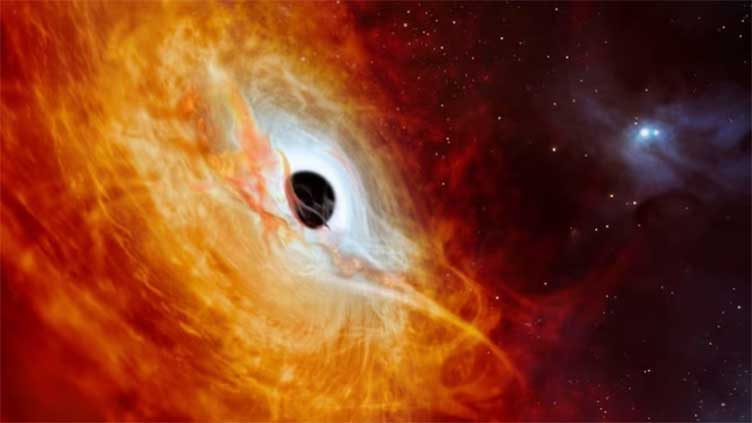This black hole is so hungry it eats at least one sun every day

Technology
The universe is filled with enigmatic objects
(Web Desk) - The black hole is so big its mass is approximately 17 billion times that of our solar system’s sun and was first discovered using a 2.3-metre telescope at the ANU Siding Spring Observatory near Coonabarabran.
The universe is filled with enigmatic objects, and the most villainous aiming them remains the black hole, an object where gravity is so intense that even light does not escape, astronomers have now hit upon a hungry black hole.
This black hole is the fastest-growing object that has been found so far, it's devouring the equivalent of one sun every day, researchers at the Australian National University (ANU) have said.
“The incredible rate of growth also means a huge release of light and heat. So, this is also the most luminous known object in the universe. It’s 500 trillion times brighter than our sun,” Associate Professor Christian Wolf, who led the study, said.
The black hole is so big its mass is approximately 17 billion times that of our solar system’s sun and was first discovered using a 2.3-metre telescope at the ANU Siding Spring Observatory near Coonabarabran in NSW. The team then used the largest telescope in the world – the European Southern Observatory’s Very Large Telescope – to confirm the full nature of the black hole.
"It’s a surprise it remained undetected until now, given what we know about many other, less impressive black holes. It was hiding in plain sight,” Co-author Dr Christopher Onken added.
A black hole is a region in space where gravity is so strong that nothing, not even light, can escape its gravitational pull. The boundary surrounding a black hole is known as the event horizon. Once an object crosses this boundary, it is inevitably drawn into the black hole, and no information or signals from inside the event horizon can reach outside observers.
Black holes are formed when massive stars run out of fuel and collapse under their gravitational forces. The collapse is so intense that it creates a singularity, a point with infinite density at the center of the black hole. The event horizon surrounds this singularity.
“The light from this black hole has travelled over 12 billion years to reach us. In the adolescent universe, the matter was moving chaotically and feeding hungry black holes. Today, stars are moving orderly at safe distances and only rarely plunge into black holes,” Professor Rachel Webster from the University of Melbourne added.


